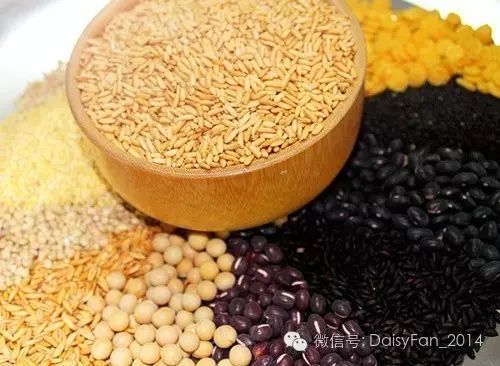Is Whole Grain Powder Beneficial or Harmful for Health?—— Supermarket whole grain powders are marketed as health products, but why do some doctors say these should not be consumed? “ A female student asked me: I am a student and cannot cook grains in my dormitory, so I want to buy some whole grain powder from the supermarket. However, I saw a doctor online say that eating grain powder cannot promote health and may even harm health, which scared me away from buying it. Is that true? I asked: What exactly did the doctor say?“ The doctor mentioned that whole grain powder can raise blood sugar levels more quickly, which is detrimental to health. Regardless of whether one has diabetes, it is not recommended to consume it in large amounts. In the endocrinology department, hearing that patients consume grain powder is quite concerning. In short, eating grain powder is merely an attempt to slow absorption, but grinding it into powder actually increases absorption, which is counterproductive. “ Another middle-aged woman asked: I have been eating grain powder for several months, having a large bowl of it in the morning and evening as a staple, replacing my previous bowl of white rice. I feel like I have lost some weight, but why do I feel a bit weak and shaky before lunchtime? Could this be low blood sugar? Is it related to the grain powder? Is it true that everyone should avoid grain powder? In fact, many people ask this question, and I have answered it dozens of times. In my view, it is not a matter of whether one can eat it, but rather how to eat it. A few years ago, when grain powder started to gain popularity, I noticed these products and began conducting blood sugar experiments, of course, among healthy individuals, as the GI (glycemic index) of foods is calculated based on the blood sugar response of healthy people. Theoretically, the finer the starch particles, the softer the texture, and the more thoroughly it is cooked, the faster it digests. Faster digestion leads to quicker absorption, and a large amount of glucose entering the bloodstream in a short time can cause a rapid increase in blood sugar levels. According to experimental results, roasting and grinding indeed increases the glycemic index of the same ingredient, raising the peak blood sugar levels. For example, the glycemic index of red beans and oats cooked at normal pressure is only 25 and 61, while after roasting and grinding and mixing with boiling water, it can rise to 75 and 82 (Dong Yang et al., 2016). Therefore, for individuals with diabetes or prediabetes, it is best to consume whole cooked grains directly. Moreover, it is important to remember that even when cooking whole grains at normal pressure, the longer the soaking and cooking time, the higher the blood sugar response. For instance, using a pressure cooker to cook grains for 15 minutes versus 25 minutes yields very different results. Cooking methods that retain some chewiness are better for controlling blood sugar, while solely pursuing soft and easily digestible textures will naturally lead to higher blood sugar responses. However, on the other hand,
the significance of consuming grains is not solely to lower blood sugar but also to supplement nutrition. The vitamin, mineral, and dietary fiber content of whole grains is several times that of white rice, with some indicators being even tenfold higher. Therefore, even if the glycemic index of grain porridge is as high as 80 or above, it is still worth consuming.
Especially for those dieting, the amount of staple food is usually quite small. A normal meal typically includes about 100 grams of staple food, but during dieting, it may only be 50 grams. If one chooses to eat 50 grams of whole grain powder, it will definitely provide more nutrients than half a bowl of rice made from 50 grams of rice.
At the same time, because whole grain powder has a high dietary fiber content, it expands significantly when mixed with water, providing a greater sense of fullness. In other words, compared to eating half a bowl of white rice, consuming a large bowl of grain porridge (50 grams of grain powder mixed with water yields about 400 milliliters) may have similar dry weight and caloric content, but it feels more filling and is less likely to leave one hungry. Therefore, for those without diabetes, who have good blood sugar control but need to reduce food intake, dieters can still consider roasted and ground whole grain powder as a good option. Additionally, the convenience of grain powder is also appealing. For students who are not allowed to use electrical appliances in their dormitories, it is convenient to consume grain porridge that can be prepared with hot water, allowing them to easily obtain nutrients from grains, especially as a snack or late-night meal. Moreover, for office workers who need snacks, feeling hungry during work hours, mixing a few scoops of grain porridge is as convenient as preparing oatmeal, providing a quick energy boost and stabilizing blood sugar. “ Some people ask: Can my family members with diabetes eat whole grain powder? Given the limitations of working conditions, it is inconvenient to cook grain meals, and if they cannot eat anything other than white rice, is there no way to consume grains?
In fact, although whole grains in powdered form can raise blood sugar levels quickly, it does not mean that grain powder cannot be consumed— the key is to combine it properly to lower the blood sugar response.
First, it is necessary to prioritize using starchy bean powders, such as red bean powder, adzuki bean powder, and mung bean powder, which should make up half; while brown rice, millet, corn, and other grain powders should not exceed half.
At the same time, in addition to boiling water, it is essential to mix large amounts of hot soy milk or hot milk with the grain porridge, as this can effectively help suppress blood sugar levels. Research abroad has long shown that pairing high glycemic index staple foods with large amounts of milk can lower post-meal blood sugar responses. Our recent studies have also found that soy milk can have a similar effect.
In summary, grain porridge can still help us achieve health benefits, but the specific method of consumption is very important. To summarize, the general principles are as follows:——For those with normal blood sugar who do not digest grains well but want to obtain the nutrients from grains, or for those who find it inconvenient to cook grains, they can choose grain porridge to replace part of their refined rice or flour staples. They can also use grain porridge to replace white rice porridge to supplement nutrition.——Grain porridge is easy to prepare and provides a high sense of fullness, making it suitable as a snack or late-night option for those with normal blood sugar, which is more beneficial for weight control than snacks like cookies, pastries, or instant noodles.——Diabetic patients should ideally choose whole grain meals or whole cooked grain porridge (which must contain a significant amount of oats or mixed beans) and should not use grain powder porridge to replace staple foods.——Compared to soy milk and milk, the blood sugar response of grain powder porridge is much higher, so diabetic patients should not use it to replace the soy milk and milk they consume for breakfast.——If grain powder must be used as a staple for diabetic patients, it is recommended to mix it with large amounts of soy milk and milk to lower post-meal blood sugar responses. Mixing a certain proportion of soybean powder with grain powder can also achieve similar effects. Finally, here are three reminders: 1. If you want to control blood sugar, do not add sugar or honey to grain porridge! 2. Grain porridge is just a staple food; it must be paired with other protein-rich foods and vegetables! 3. If you have not consulted a doctor, do not casually add medicinal herbs to grain porridge!
Beijing Food Nutrition and Human Health High-Precision Innovation Center Scientist
Member of the Chinese Nutrition Society
Director of the Chinese Health Promotion and Health Education Association
One of the Chief Experts in Nutrition Science Communication appointed by the China Association for Science and Technology
Doctor of Food Science from China Agricultural University, Fan Zhihong
Wishing you and your loved ones peace, health, and happiness!

【Fan Zhihong’s Original Nutrition Information】 is a contracted author on Toutiao
(Image source: Baidu Images)

